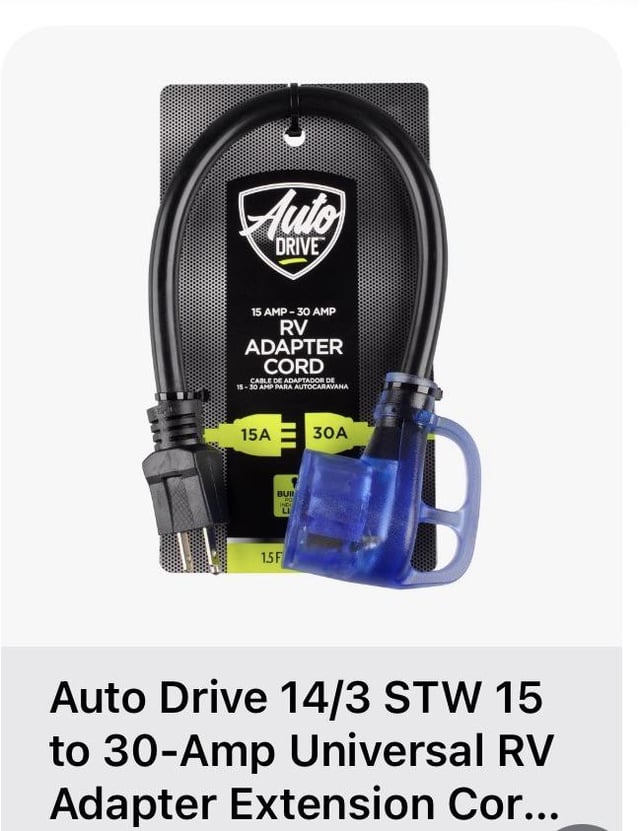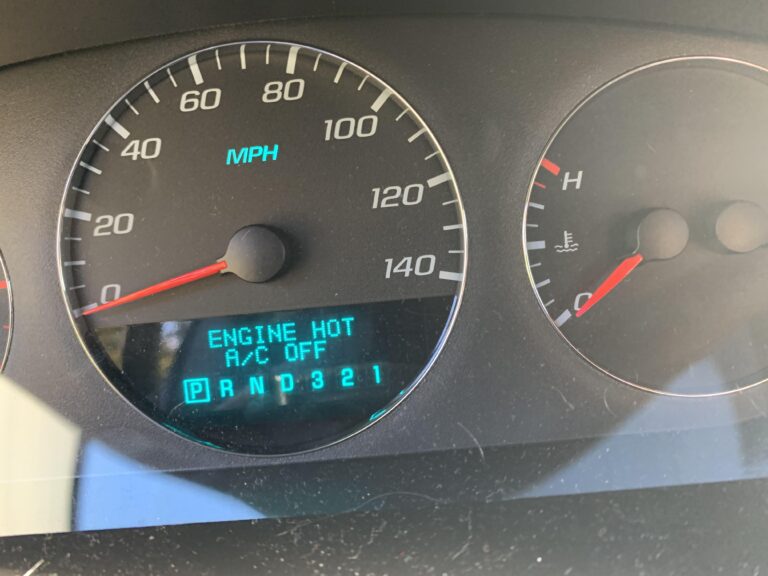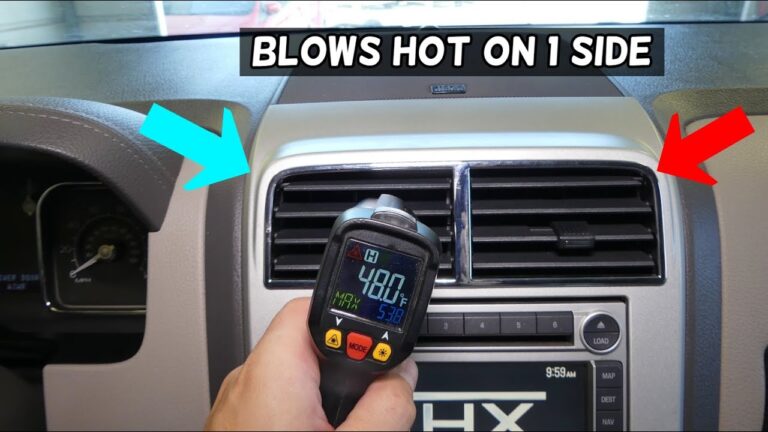Can I Run My RV AC on 15 Amps? Essential Power Insights
Yes, you can run your RV AC on 15 amps, but it’s not ideal. The AC might struggle and trip the breaker.
Running an RV air conditioner on a 15-amp circuit can be challenging. RV AC units typically require more power to operate efficiently. Plugging into a 15-amp outlet may cause the breaker to trip frequently due to the high power draw.
This setup might work for short periods or in cooler weather, but it’s not a reliable long-term solution. To ensure your RV’s air conditioning runs smoothly, consider using a 30-amp or higher power source. This not only prevents interruptions but also protects your AC unit from potential damage caused by insufficient power supply. Proper power management is crucial for a comfortable and trouble-free RV experience.
Rv Ac Power Requirements
Understanding the RV AC Power Requirements is crucial for a smooth travel experience. Many RV owners wonder if they can run their AC on a 15-amp circuit. Let’s dive into the specifics of RV AC power needs.
Understanding Amperage
Amperage measures the flow of electrical current. The higher the amperage, the more electricity flows. RV air conditioners typically require significant power to operate.
Most RV AC units need about 15 to 20 amps. Using a 15-amp circuit can be challenging. You need to ensure other appliances are off to avoid tripping the breaker.
Typical Rv Ac Wattage
Understanding the wattage helps in managing your RV’s power. Most RV air conditioners use between 1,500 to 2,000 watts. Here’s a quick breakdown:
| AC Unit | Typical Wattage |
|---|---|
| 9,000 BTU | 1,500 watts |
| 13,500 BTU | 1,800 watts |
| 15,000 BTU | 2,000 watts |
To calculate the amperage, use this formula: Wattage ÷ Voltage = Amperage.
For a 1,500-watt unit on a 120-volt circuit: 1,500 ÷ 120 = 12.5 amps.
This means a 1,500-watt AC unit can run on a 15-amp circuit, but it’s close to the limit.
Make sure to monitor other power usage to avoid overloading the circuit.
- Turn off unnecessary appliances.
- Use energy-efficient lighting.
- Monitor power usage with a meter.
By understanding these power requirements, you can better manage your RV’s electrical system.

Credit: www.reddit.com
15 Amp Circuit Basics
Running your RV AC on a 15 Amp circuit can be challenging. Understanding how a 15 Amp circuit works is crucial. Let’s dive into the basics to ensure you make an informed decision.
What Is A 15 Amp Circuit?
A 15 Amp circuit is a common electrical circuit. It can handle up to 15 amps of electrical current. This type of circuit is often found in residential settings. It is also used in some RVs for specific appliances.
Amps measure the flow of electrical current. Volts measure electrical potential. Watts measure the total power used. The formula Watts = Amps x Volts helps calculate power consumption. For a 15 Amp circuit at 120 volts, the maximum wattage is 1800 watts.
Common Uses In Rvs
RVs use 15 Amp circuits for various appliances and devices. Lighting is a typical use. Most RV lights operate on 15 Amp circuits. Small kitchen appliances like coffee makers and microwaves also use 15 Amp circuits. Entertainment systems such as TVs and radios rely on these circuits as well.
Using a 15 Amp circuit for your RV AC can be tricky. RV AC units often require more power than 15 Amps can provide. Check your AC unit’s specifications before using a 15 Amp circuit. Overloading the circuit can cause tripped breakers or even fire hazards.
Compatibility Check
Running your RV AC on a 15-amp circuit can be tricky. It’s essential to ensure compatibility before proceeding. This section will guide you through the process.
Matching Ac And Circuit
First, check your RV AC unit’s power requirements. Most RV air conditioners need between 12-16 amps. Look at the label on the AC unit to find its amperage.
| AC Unit | Amperage |
|---|---|
| Standard RV AC | 12-16 amps |
| High-Efficiency RV AC | 10-12 amps |
Next, verify the circuit breaker in your RV. A standard 15-amp circuit may not handle the load. This is especially true if other devices are connected.
- Check the breaker panel for the amp rating.
- Ensure no other high-power devices share the circuit.
- Consider using a dedicated circuit for the AC unit.
Potential Risks
Running an RV AC on an underpowered circuit poses several risks. The most immediate risk is tripping the circuit breaker. This can lead to repeated power interruptions.
Another risk is overheating the wiring. This can cause insulation damage and fire hazards. Overloaded circuits stress electrical components, leading to premature failure.
Lastly, insufficient power can damage the AC unit itself. Operating below optimal voltage may reduce efficiency and lifespan.
- Tripping circuit breaker
- Overheating wiring
- Damaging the AC unit
To safely run your RV AC on a 15-amp circuit, ensure compatibility. Use a dedicated circuit and monitor the load carefully.
Power Management Tips
Running your RV AC on 15 amps can be a challenge. Managing your power efficiently is crucial. Here are some tips to help you balance the load and use power strips effectively.
Load Balancing
Balancing the load in your RV is essential. It prevents overloads and tripped breakers. Start by identifying high-power devices. Use them one at a time. Avoid running the microwave and AC together.
- Turn off non-essential appliances
- Use energy-efficient devices
- Monitor your power usage
Consider using a power management system. It helps distribute power evenly. This system can prioritize essential devices. You can enjoy your AC without interruptions.
Using Power Strips
Power strips can help manage your RV’s electrical load. Choose strips with built-in circuit breakers. They provide added protection against overloads. Plug low-power devices into the strips.
- Use power strips for chargers and small electronics
- Avoid plugging high-power devices into the same strip
- Regularly check the power strip for wear and tear
Here’s a simple table to guide your power strip usage:
| Device | Power Requirement (Watts) | Recommended Power Source |
|---|---|---|
| Phone Charger | 5-10W | Power Strip |
| Laptop | 50-100W | Power Strip |
| Microwave | 800-1200W | Direct Outlet |
| AC Unit | 1000-1500W | Direct Outlet |
Using power strips wisely can help distribute the electrical load. It keeps your 15-amp service running smoothly. Enjoy cool air without stressing your RV’s power system.
Alternative Solutions
Running your RV AC on 15 amps can be challenging. It may not provide enough power. Here are some alternative solutions to consider.
Upgrading To 30 Amps
One solution is upgrading to 30 amps. This provides more power for your RV. It allows you to run more appliances at once. Below is a table comparing 15 amps and 30 amps.
| Feature | 15 Amps | 30 Amps |
|---|---|---|
| Power Supply | Limited | Robust |
| Number of Appliances | Few | Many |
| AC Performance | Poor | Optimal |
Upgrading to 30 amps requires an RV electrical system upgrade. You may need professional help. This ensures safety and efficiency.
Portable Generators
Another solution is using portable generators. These can provide extra power. They are easy to transport and set up. Here are some key benefits:
- Independent power source
- Useful in remote locations
- Supports multiple appliances
Choosing the right generator is important. Consider the power output. Ensure it meets your RV needs.
Portable generators have some downsides. They can be noisy. Fuel consumption is another consideration.
For quieter options, look for inverter generators. These are quieter and fuel-efficient. They are ideal for RV use.
Safety Precautions
Running your RV AC on 15 amps can be tricky. It’s crucial to follow safety precautions. This ensures your equipment works correctly and prevents accidents.
Avoiding Overloads
Overloading your RV circuit can damage your AC unit. It can also cause electrical hazards. To avoid this, check the amp rating of your AC unit. Most RV AC units need more than 15 amps. Running a high-amp unit on a low-amp circuit is risky. Turn off other appliances before using your AC. This reduces the total amp draw. Use a power meter to monitor your RV’s electrical load. This helps you stay within safe limits.
Using Surge Protectors
Surge protectors are essential for your RV’s electrical safety. They protect your appliances from power spikes. Power spikes can occur due to weather or faulty wiring. Install a surge protector at your power source. This prevents damage to your AC unit and other devices. Choose a surge protector with automatic reset. This feature restores power after a surge, ensuring continuous protection.
| Safety Measure | Purpose | Tip |
|---|---|---|
| Avoid Overloads | Protects AC unit and circuit | Use a power meter |
| Use Surge Protectors | Prevents damage from power spikes | Choose one with automatic reset |
Maintaining your RV’s electrical system is vital. Regular checks help you catch issues early. Proper maintenance ensures a safe and enjoyable trip.
Energy Efficiency
Running an RV AC unit on 15 amps can be challenging. Energy efficiency is crucial for maintaining comfort without overloading your system. Here, we’ll explore ways to optimize your AC usage and insulation techniques.
Optimizing Ac Usage
Optimizing AC usage helps you save energy and avoid system overload. Follow these tips to maximize efficiency:
- Use the AC during cooler times of the day.
- Set the thermostat to a reasonable temperature.
- Utilize fans to circulate air inside the RV.
- Close curtains or blinds to block out the sun.
- Turn off unnecessary electrical devices.
Insulation Techniques
Insulation techniques are essential for maintaining a cool interior. Proper insulation reduces the workload on your AC unit. Consider these methods:
- Install reflective window shades.
- Add thermal curtains to windows.
- Seal any gaps or cracks around windows and doors.
- Use insulated RV skirting to reduce heat exchange.
- Apply insulating foam to exposed areas.
By applying these energy efficiency practices, you can run your RV AC on 15 amps effectively. Keep your RV cool and comfortable without overloading the electrical system.
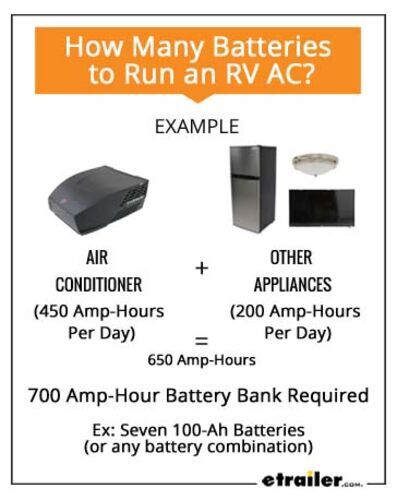
Credit: www.etrailer.com
Troubleshooting Issues
Running an RV AC on a 15-amp circuit can cause various issues. Troubleshooting these problems is vital for safe and efficient operation. This section will help you identify and resolve common issues. It will also guide you on when to seek professional help.
Identifying Problems
First, check if your RV AC is tripping the circuit breaker. This usually means the AC is drawing more power than the 15-amp circuit can handle. Inspect the power cord for any visible damage. A damaged cord can cause power issues. Use a voltage meter to check the power supply. Make sure it provides a stable voltage.<p
Listen for unusual noises from the AC unit. Strange sounds may indicate internal problems. Check the air filter and clean it if necessary. A clogged filter can reduce efficiency. Monitor the AC’s cooling performance. If it’s not cooling properly, there might be an issue with the refrigerant levels or compressor.
Seeking Professional Help
If you’ve checked all the above and the problem persists, seek professional help. An expert can diagnose complex issues. They can also ensure your AC runs efficiently on a 15-amp circuit. Make sure to hire a qualified technician with RV AC experience. They will have the right tools and knowledge.
Regular maintenance by a professional can prevent future issues. It can also extend the life of your RV AC. Always use a certified technician to avoid further complications.
“`
Credit: www.reddit.com
Frequently Asked Questions
Will An Rv Air Conditioner Run On 15 Amp?
An RV air conditioner can run on a 15 amp circuit, but it may not be efficient. Ensure minimal other devices are in use.
How Many Amps Do You Need To Run A Rv Air Conditioner?
Most RV air conditioners require 15 to 20 amps to run. Ensure your power source can handle this load.
Is 15 Amps Enough For Air Conditioner?
A 15-amp circuit can handle small air conditioners. Larger units typically need 20 amps or more for safe operation.
Conclusion
Running your RV AC on 15 amps is possible with careful management. Monitor power usage to avoid tripping breakers. Use energy-efficient appliances and consider upgrading your RV’s electrical system for better performance. Always prioritize safety and consult a professional if unsure.
Enjoy a comfortable and cool RV experience!

